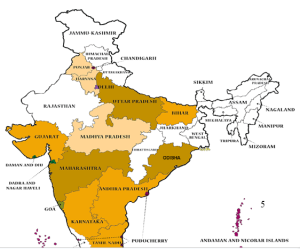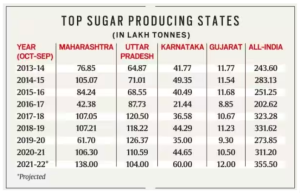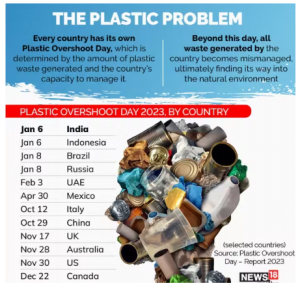Context:
Indian Council of Agricultural Research (ICAR) had conducted trials at 20 selected locations on selected crops to study the effect of IFFCO’s nano-urea (liquid) as a foliar spray.
More on News:

About Nano Urea:
About Indian Farmers Fertiliser Cooperative Limited:
Nanotechnology:
|
Context:
The National Health Authority (NHA) announces extension of its Digital Health Incentives Scheme (DHIS) under the Ayushman Bharat Digital Mission (ABDM) till 31st December 2023.
About Digital Health Incentives Scheme:
Significance:
Ayushman Bharat Digital Mission (ABDM)
|
News Source: PIB
Context:
Rajya Sabha Chairman Jagdeep Dhankar has referred complaints against two opposition MPs to the Privileges Committee.
About Privilege Motion:
Committee of Privileges:
News Source: The Indian Express
| Amrit Bharat Station
Scheme |
|
| Novorossiysk Port |
|
| Fediverse |
|
Context:
The United Nations Food and Agriculture Organization (FAO) reported that the rice price index rose by 2.8 percent in July from the previous month, reaching its highest level in nearly 12 years.
Reason for Price Surge:
About Rice Price Index:
Current Rice Exporters and Importers
|
News Source: Economic Times
Context:
Recently, the Union Home Minister chaired the 38th meeting of the Committee of Parliament on Official Language.
More on News:
About Committee of Parliament on Official Language:
| Additional Information:
About Eighth Schedule
|
News Source: The Hindu
Context:
In 2021-2022, India surpassed Brazil to become the world’s largest sugar producer, reaching an all-time high production of 359 lakh tonnes.

About Sugarcane Crop:
Suitable Conditions for sugarcane Production:
|
Status of Sugarcane Sector in India:

The excess sugar production in India can be attributed to several factors:
| Determining Prices of Sugarcane: Central and State Governments
Central Government: Fair and Remunerative Price (FRP)
State Government: State Advised Prices (SAP)
|
Advantages of Increasing Sugar Production:
Efforts made by the government to address the issue of sugar surplus and promote the use of ethanol:
|
Excessive sugarcane cultivation impacts groundwater in several ways:
What needs to be done to address the challenges of excessive sugarcane cultivation and its impact on groundwater:
| Water Intensive Cropping Pattern in India:
Cropping patterns are shifting towards water-intensive crops due to:
To promote crop diversification, the government should:
|
News Source: The Hindu
Context:
Recently, Earth Observed its first Plastic Overshoot Day on 28 July, 2023.
More About News
 Each country has its own Plastic Overshoot Day, which is determined by the amount of plastic waste generated and the country’s capacity to manage it
Each country has its own Plastic Overshoot Day, which is determined by the amount of plastic waste generated and the country’s capacity to manage itGlobal Plastic Pollution Crisis
Menace of Plastic Pollution in India
Steps Taken to Reduce Menace of Plastic Pollution in India
Global Steps to Reduce Plastic Pollution
|
Way Forward
Earth Overshoot Day
|
News Source: Down to Earth
SC Verdict on Newsclick Shows Adherence to Due Pro...
Stay Invested: On Chabahar and India-Iran Relation...
Credit Rating Agencies, Impact on India’s De...
Catapulting Indian Biopharma Industry
Globalisation Under Threat, US Import Tariffs Have...
Global Report on Hypertension, Global Insights and...
<div class="new-fform">
</div>
